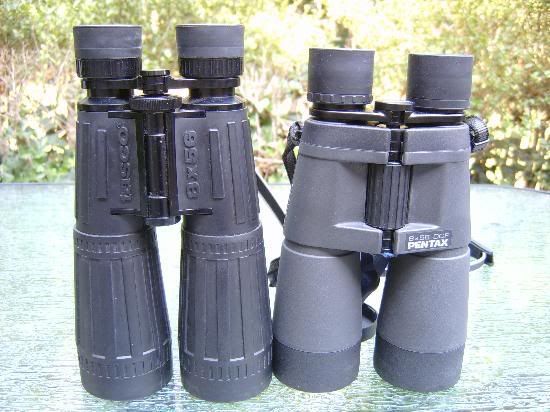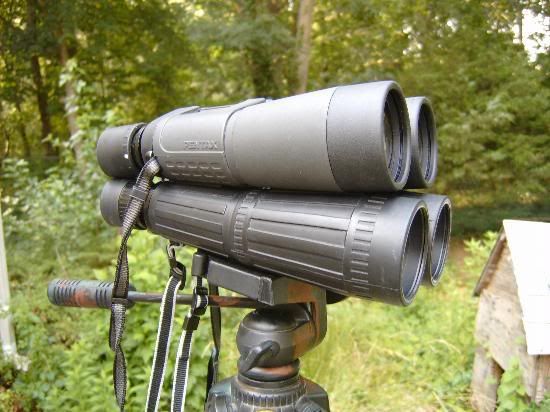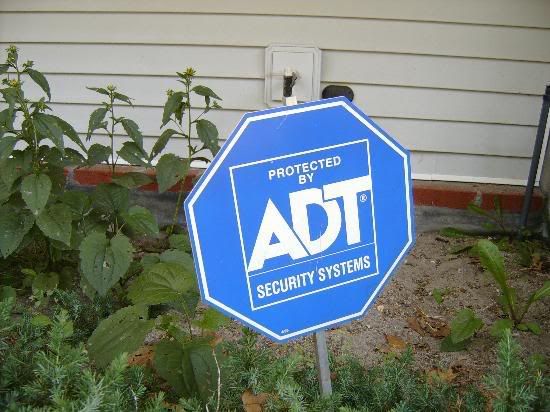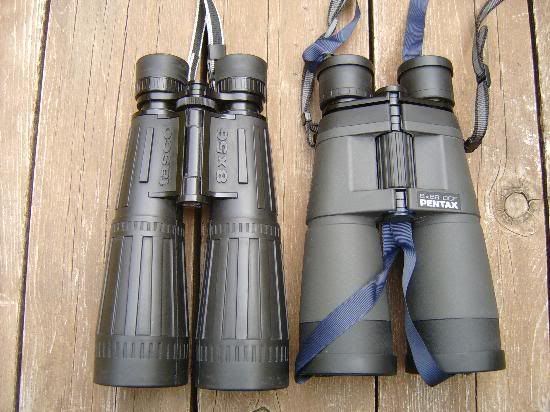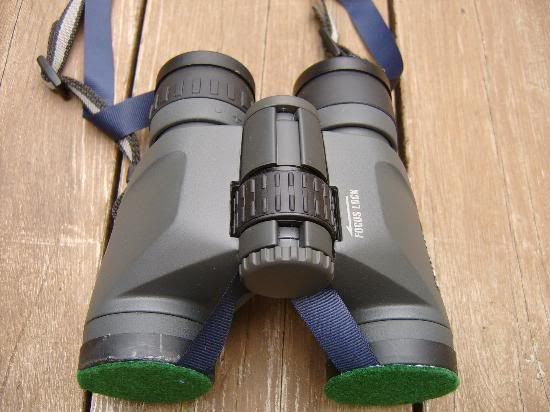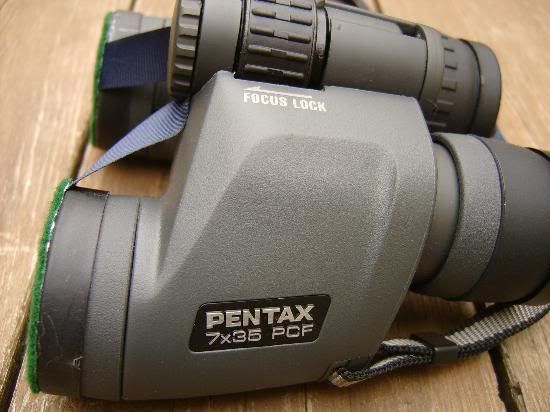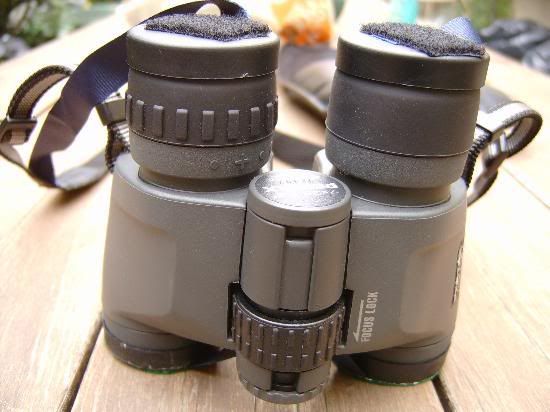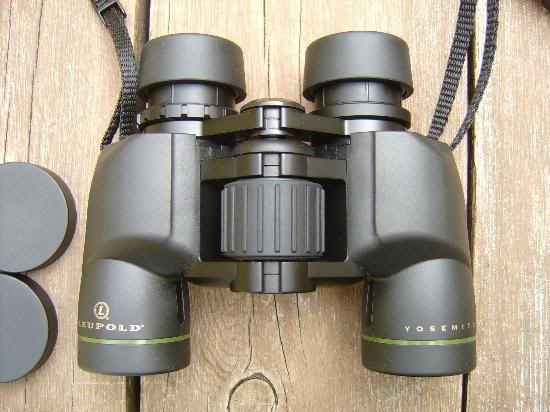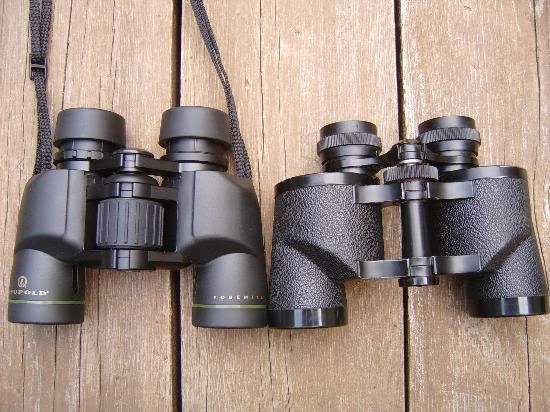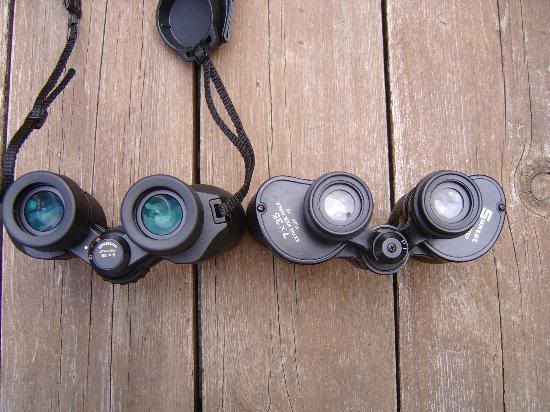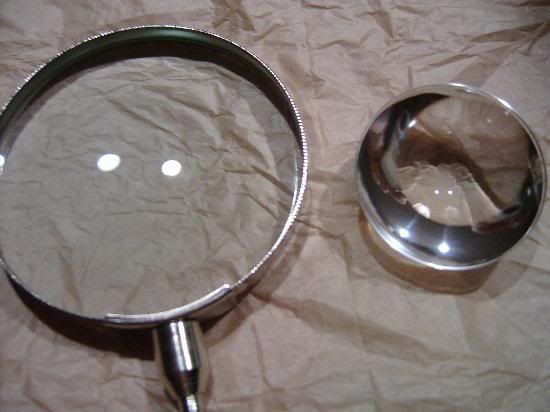black bear 84
New member
BINOCULARS
Hi guys,
The big brown truck and the nice man that brings goodies to the house stopped yesterday with a package from Cabela’s.
I was deprived from sleep for the five days that it took between order and delivery, but finally the Nikon Monarch ATB 8x40 binoculars are here, and I will sleep soundly tonight.
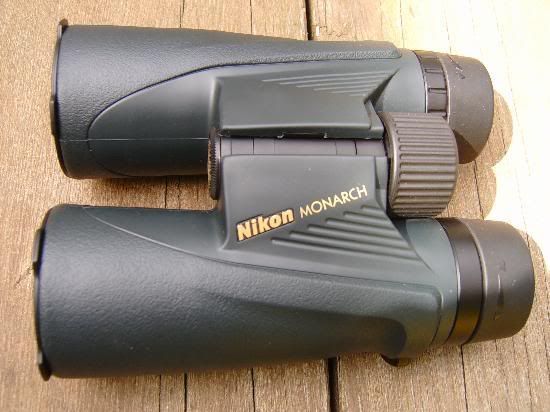
Although I have quite a few binoculars in my safe, I don’t have nearly as many of them as I do flashlights (most of you know me as the crazy guy that owns all those flashlights); but fear not, I am getting there.
So it occurred to me that I should make a post about binoculars for those that are bored of hearing about my lights.
I had owned quite a good amount of binoculars since I bought my first as a 15 year-old with an itch about optics. I even owned an expensive Zeiss when I was single and didn’t had a family to take care of.
And I am here to tell you that the quality, brightness, sharpness, and durability of the new binoculars now on the market; it is better than ever.
Not long ago, if we wanted all these features in a good binocular the choice was between spending a thousand in a Zeiss, Swarosvki, Leica or Minox or looking for good Porro prisms in the Nikon or Pentax lines.
But since a couple of years ago, the Japanese starting coating the roof prisms of their binoculars with Phase Coating, and the sharpness and definition of their roof prism binos had increased to the point to rival the European imports from the big four, and all at very modest cost.
Take, for example, the Nikon Monarch ATB (All terrain binocular) 8x42 I just received, or my Pentax DCF WP 8x42 that I bought last year.
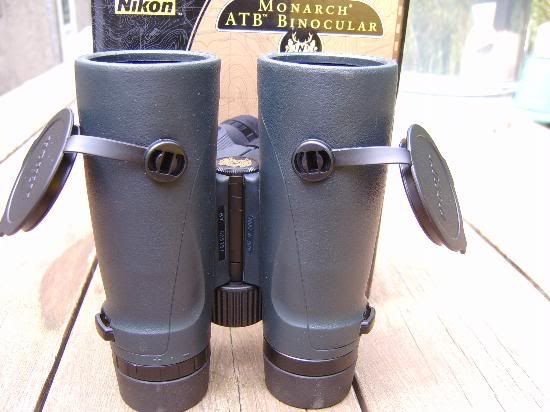
All lenses are fully multicoated (that means all surfaces, not only the glass to air surfaces) prisms are phased-corrected and have mirror-coated lower prisms (not cheap aluminum). They have blackened tubes to avoid reflections and are waterproof and fog proof; they have a nice outer coating of rubber (silent) and very good ergonomics. I particularly like the twist eye cups for eye-glass wearers and the ample eye relief: no problem using it with my glasses and instant acquisition of the picture even with glasses on.
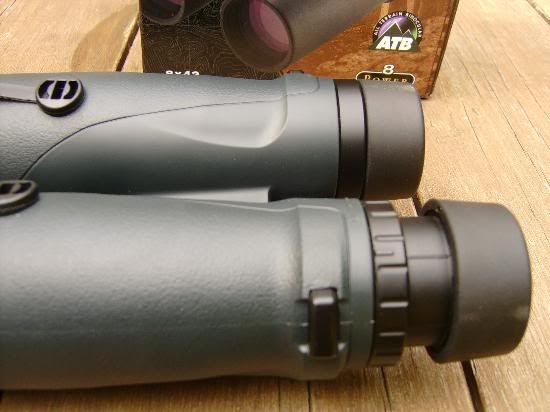
All that can be said for the Nikon Monarch can be said also of my Pentax DCF WP 8x42, except for the weight: the Nikon is lighter at 22 ounces but I don’t know how much my Pentax weighs until I get a new battery for my fish scale.
I like the approach of securing the objective caps to the body of the binocular that the Nikon uses as well. I had to get creative with the Pentax and cook up something home-made to hold the caps to the binocular body.
I did the usual checking for good prisms by holding the binos a few inches away and looking at the light spot in the ocular lens, nice and round without any hint of flattening, just like I was expecting. I checked collimation by holding it a few inches away and pointing them at the yellow line in the road, straight and sharp with not sign of being distorted.
To test the sharpness and resolution most people look from the inside to the outside thru an open window, and most binoculars will perform well under those conditions. I look for a dark corner in the room and try to read some labels or a newspaper print set for the occasion; that is what separates the mediocre from the good or great binoculars.
As the Nikon and the Pentax are so the same in quality I tried to spot any optical differences between them by perching one on top of the other and alternatively looking thru them. After several minutes of this I have to admit that they are both the same optical quality as far as my eyes can tell, without resorting to an optical laboratory.
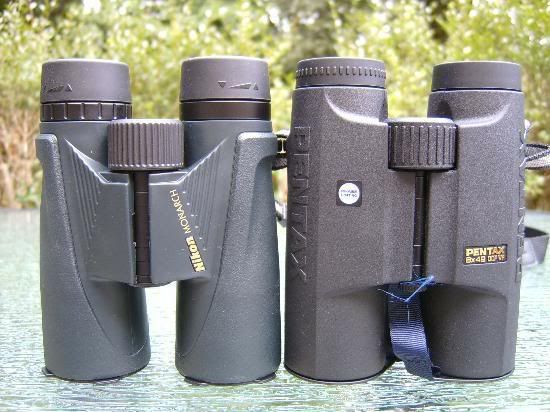
I have looked thru many Swarovski and Zeiss lenses, (I hunt the stores) superb optical quality in those glasses. I can tell you for sure than the new Nikon and Pentax are almost the equal of those expensive brands; that I only paid just over $300 with shipping for such a superb glass as the Nikon still amazes me.
Kind regards,
Black Bear
Hi guys,
The big brown truck and the nice man that brings goodies to the house stopped yesterday with a package from Cabela’s.
I was deprived from sleep for the five days that it took between order and delivery, but finally the Nikon Monarch ATB 8x40 binoculars are here, and I will sleep soundly tonight.

Although I have quite a few binoculars in my safe, I don’t have nearly as many of them as I do flashlights (most of you know me as the crazy guy that owns all those flashlights); but fear not, I am getting there.
So it occurred to me that I should make a post about binoculars for those that are bored of hearing about my lights.
I had owned quite a good amount of binoculars since I bought my first as a 15 year-old with an itch about optics. I even owned an expensive Zeiss when I was single and didn’t had a family to take care of.
And I am here to tell you that the quality, brightness, sharpness, and durability of the new binoculars now on the market; it is better than ever.
Not long ago, if we wanted all these features in a good binocular the choice was between spending a thousand in a Zeiss, Swarosvki, Leica or Minox or looking for good Porro prisms in the Nikon or Pentax lines.
But since a couple of years ago, the Japanese starting coating the roof prisms of their binoculars with Phase Coating, and the sharpness and definition of their roof prism binos had increased to the point to rival the European imports from the big four, and all at very modest cost.
Take, for example, the Nikon Monarch ATB (All terrain binocular) 8x42 I just received, or my Pentax DCF WP 8x42 that I bought last year.

All lenses are fully multicoated (that means all surfaces, not only the glass to air surfaces) prisms are phased-corrected and have mirror-coated lower prisms (not cheap aluminum). They have blackened tubes to avoid reflections and are waterproof and fog proof; they have a nice outer coating of rubber (silent) and very good ergonomics. I particularly like the twist eye cups for eye-glass wearers and the ample eye relief: no problem using it with my glasses and instant acquisition of the picture even with glasses on.

All that can be said for the Nikon Monarch can be said also of my Pentax DCF WP 8x42, except for the weight: the Nikon is lighter at 22 ounces but I don’t know how much my Pentax weighs until I get a new battery for my fish scale.
I like the approach of securing the objective caps to the body of the binocular that the Nikon uses as well. I had to get creative with the Pentax and cook up something home-made to hold the caps to the binocular body.
I did the usual checking for good prisms by holding the binos a few inches away and looking at the light spot in the ocular lens, nice and round without any hint of flattening, just like I was expecting. I checked collimation by holding it a few inches away and pointing them at the yellow line in the road, straight and sharp with not sign of being distorted.
To test the sharpness and resolution most people look from the inside to the outside thru an open window, and most binoculars will perform well under those conditions. I look for a dark corner in the room and try to read some labels or a newspaper print set for the occasion; that is what separates the mediocre from the good or great binoculars.
As the Nikon and the Pentax are so the same in quality I tried to spot any optical differences between them by perching one on top of the other and alternatively looking thru them. After several minutes of this I have to admit that they are both the same optical quality as far as my eyes can tell, without resorting to an optical laboratory.

I have looked thru many Swarovski and Zeiss lenses, (I hunt the stores) superb optical quality in those glasses. I can tell you for sure than the new Nikon and Pentax are almost the equal of those expensive brands; that I only paid just over $300 with shipping for such a superb glass as the Nikon still amazes me.
Kind regards,
Black Bear

